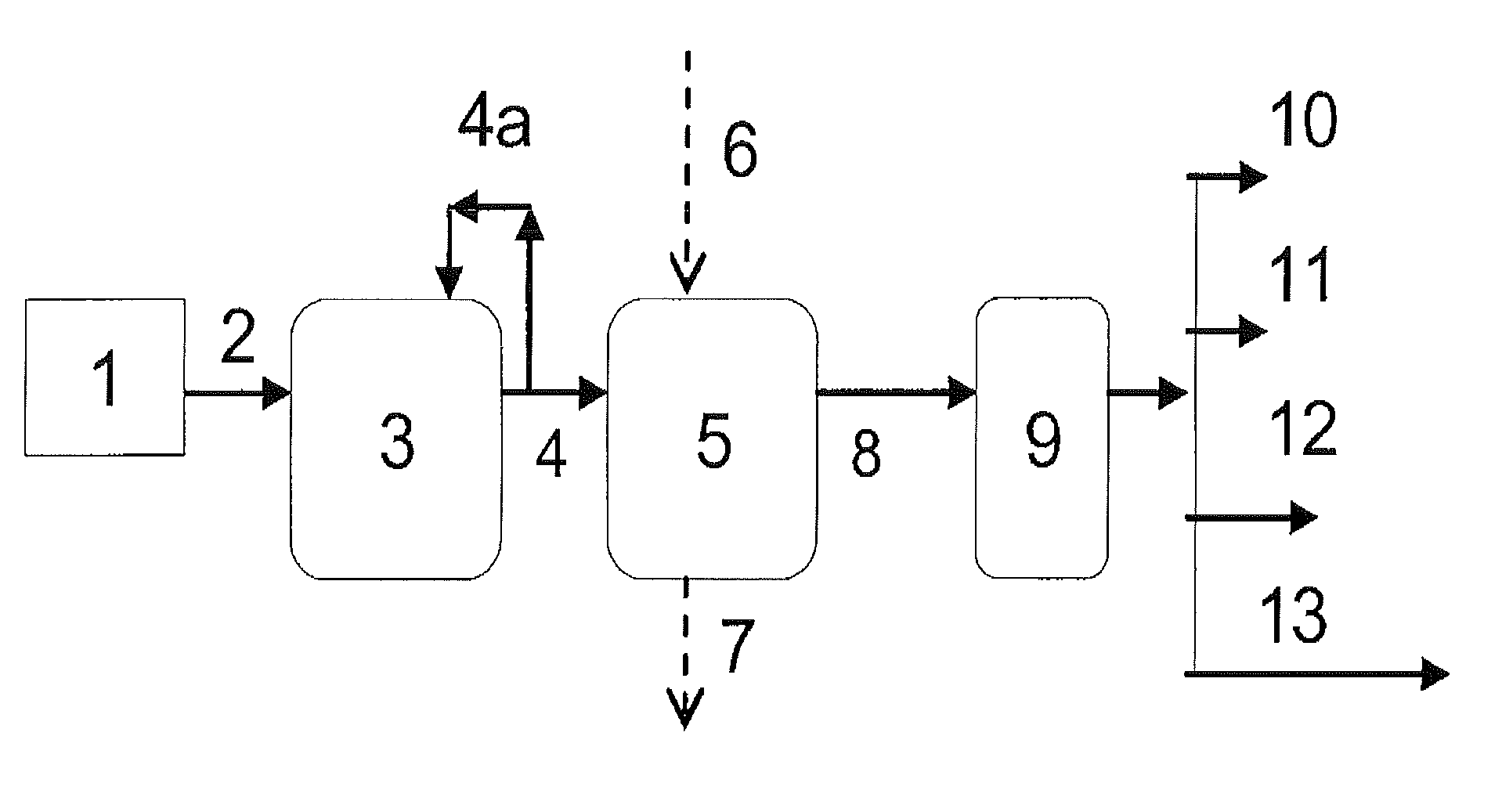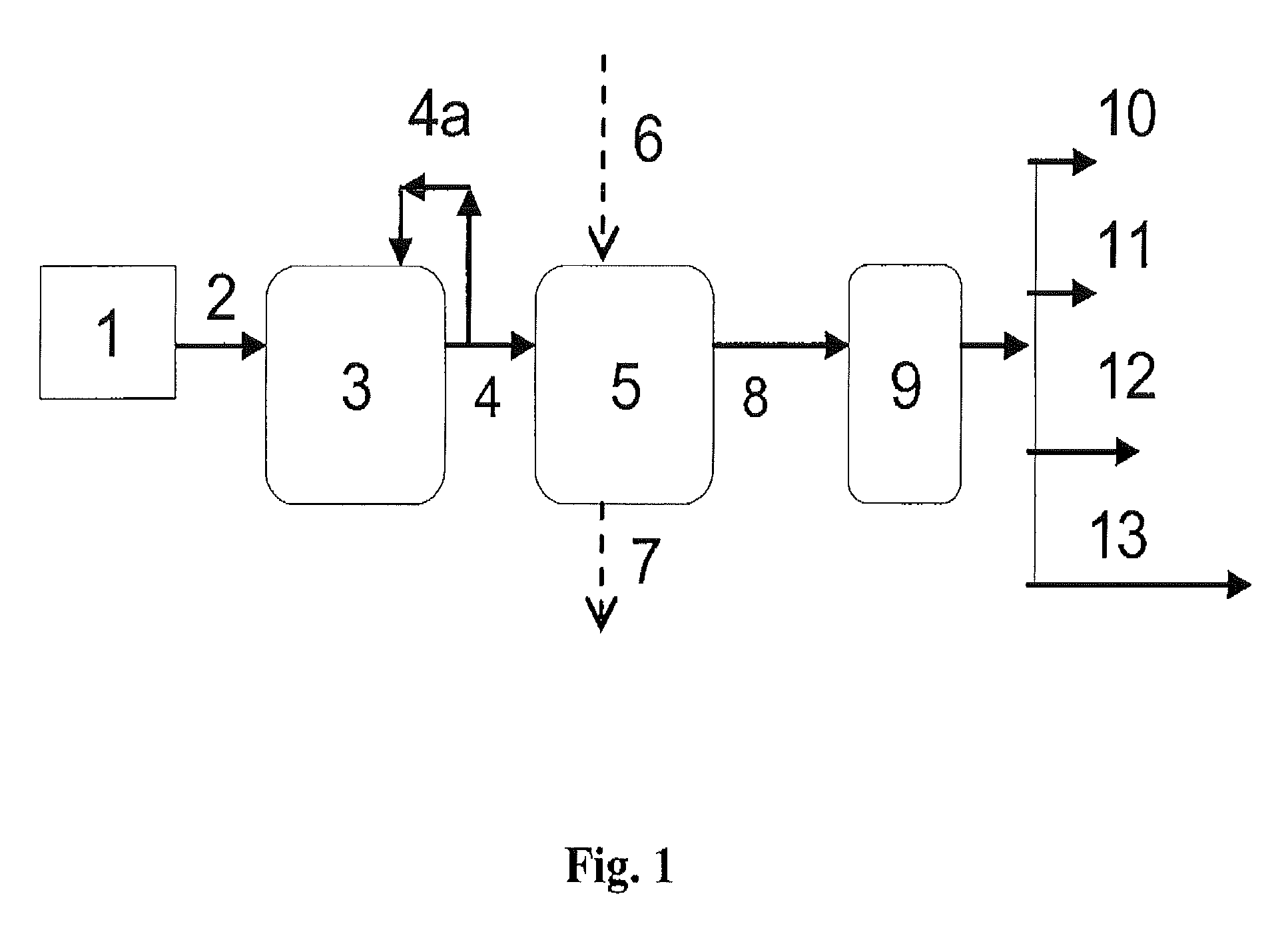Process for producing branched hydrocarbons
a hydrocarbon and saturated hydrocarbon technology, applied in the field of process for producing branched saturated hydrocarbons, can solve the problems of high volatility, limited use of esters, use of sulphur, phosphorous and metal containing additives or base oils, etc., and achieve the effects of increasing the carbon dioxide load of the atmosphere, reducing the oxidation stability of saturated base oils, and economic and efficient effects
- Summary
- Abstract
- Description
- Claims
- Application Information
AI Technical Summary
Benefits of technology
Problems solved by technology
Method used
Image
Examples
example 1
Condensation of Fatty Acids Derived from Palm Oil to Saturated Ketones
[0100]Palm oil was hydrolyzed and double bonds of the fatty acids derived from palm oil feedstock were selectively prehydrogenated. The obtained saturated fatty acid was continuously ketonised at atmospheric pressure, in a tubular reactor using a MnO2 catalyst. Temperature of the reactor was 370° C., the weight hourly space velocity (WHSV) of total feed being about 0.8 l / h (h−1). A mixture of saturated ketones having carbon chain lengths of C31, C33 and C35 was obtained as the product.
example 2
Condensation of C16 Alcohol Derived from Palm Oil
[0101]200 g of primary saturated C16 fatty alcohol (hexadecanol), palladium chloride (5 ppm palladium) and 12 g of sodium methoxylate were put in a Parr reactor. Mixing was adjusted to 250 rpm, temperature to 250° C. and pressure to 0.5 MPa. Slight nitrogen purge was maintained to sweep out water liberated in reaction. The condensation reaction was carried out until the amount of condensed alcohol was stabilized in GC analysis. After reaction the product was neutralized with hydrochloric acid, washed with water and dried with calcium chloride. Condensed C32 alcohol was obtained as reaction product.
example 3
Condensation of Fatty Acids Derived from Palm Oil to Unsaturated Ketones
[0102]Free fatty acids were distilled from palm oil (PFAD). The feed containing both saturated and unsaturated fatty acids was continuously ketonised at atmospheric pressure, in a tubular reactor using a MnO2 catalyst. Temperature of the reactor was 370° C., the weight hourly space velocity (WHSV) of total feed being about 0.6 l / h. A mixture of both saturated and unsaturated ketones having carbon chain lengths of C31, C33 and C35 was obtained as the product.
PUM
| Property | Measurement | Unit |
|---|---|---|
| temperature | aaaaa | aaaaa |
| pressure | aaaaa | aaaaa |
| temperature | aaaaa | aaaaa |
Abstract
Description
Claims
Application Information
 Login to View More
Login to View More - R&D
- Intellectual Property
- Life Sciences
- Materials
- Tech Scout
- Unparalleled Data Quality
- Higher Quality Content
- 60% Fewer Hallucinations
Browse by: Latest US Patents, China's latest patents, Technical Efficacy Thesaurus, Application Domain, Technology Topic, Popular Technical Reports.
© 2025 PatSnap. All rights reserved.Legal|Privacy policy|Modern Slavery Act Transparency Statement|Sitemap|About US| Contact US: help@patsnap.com



